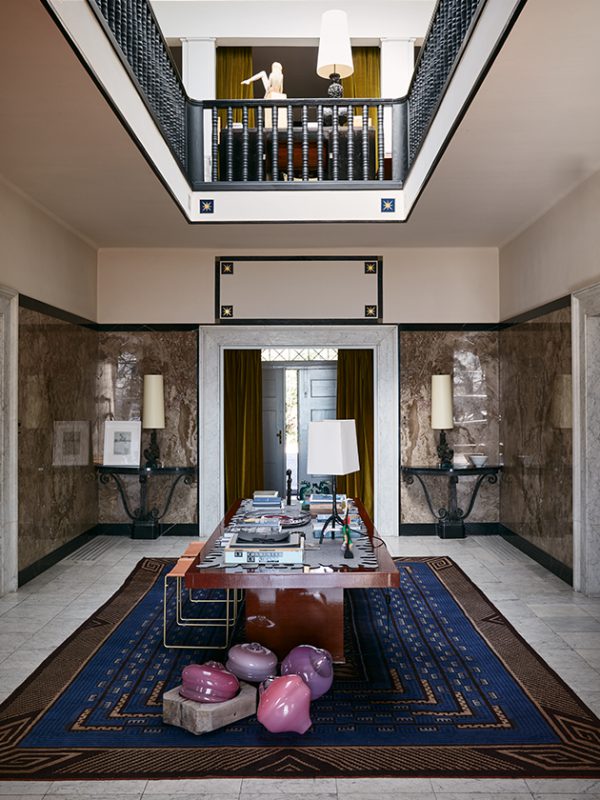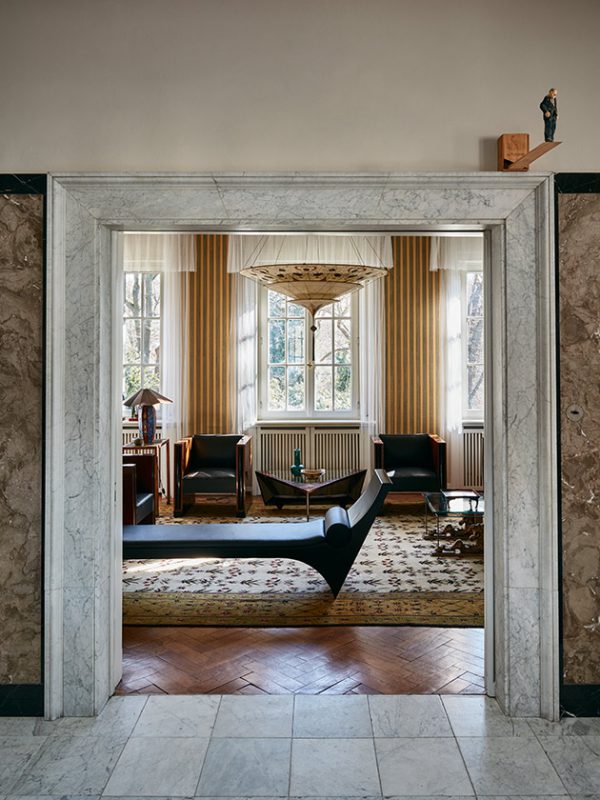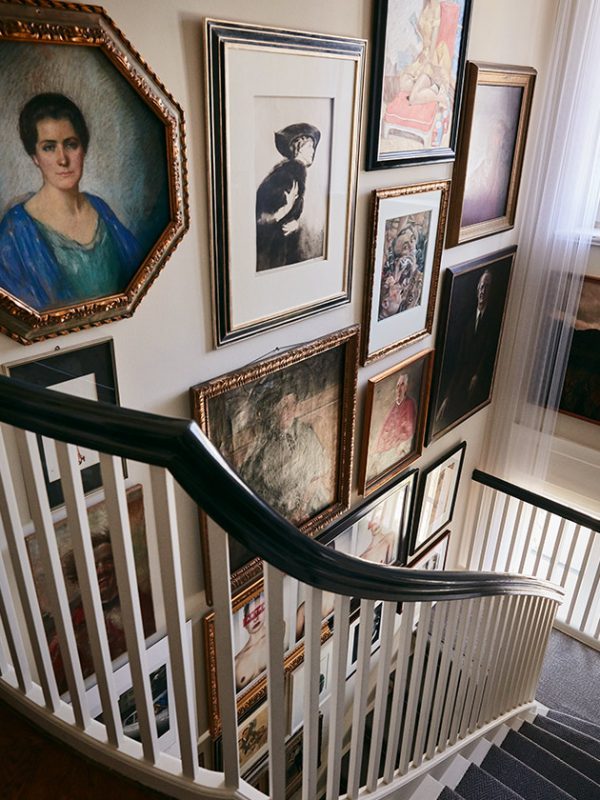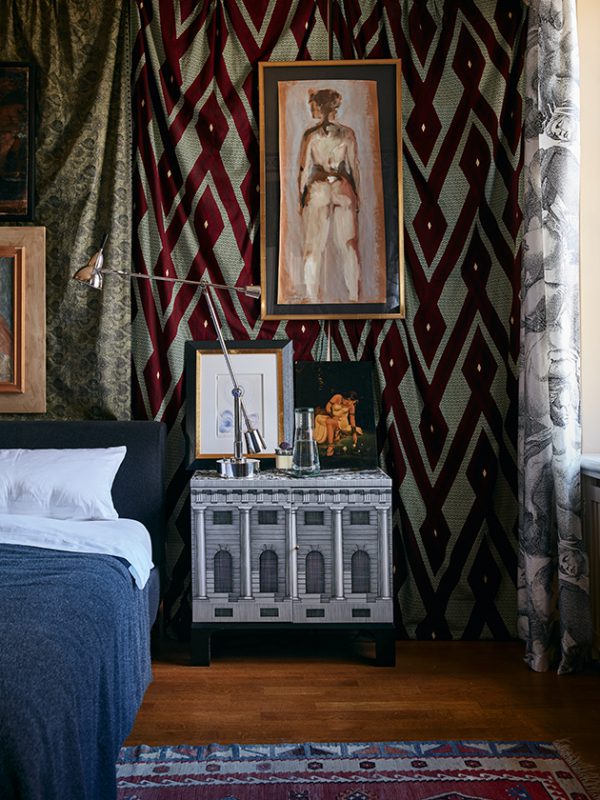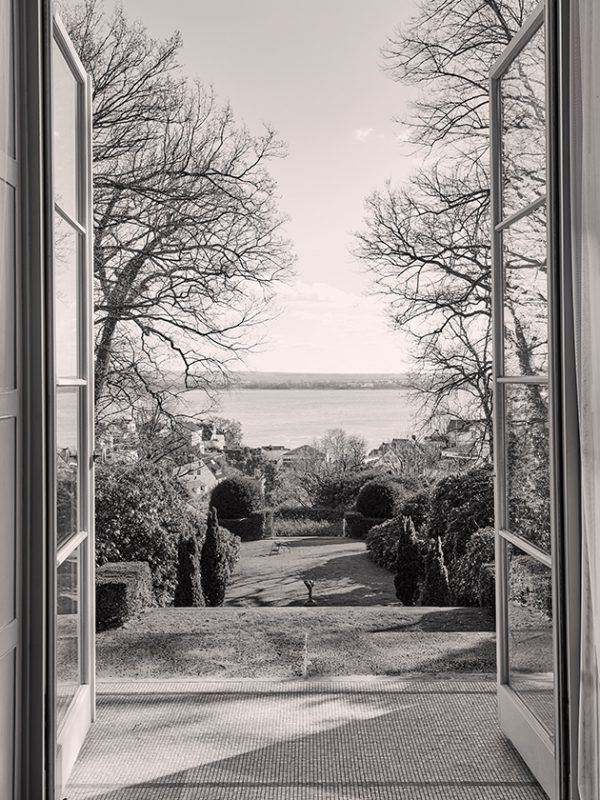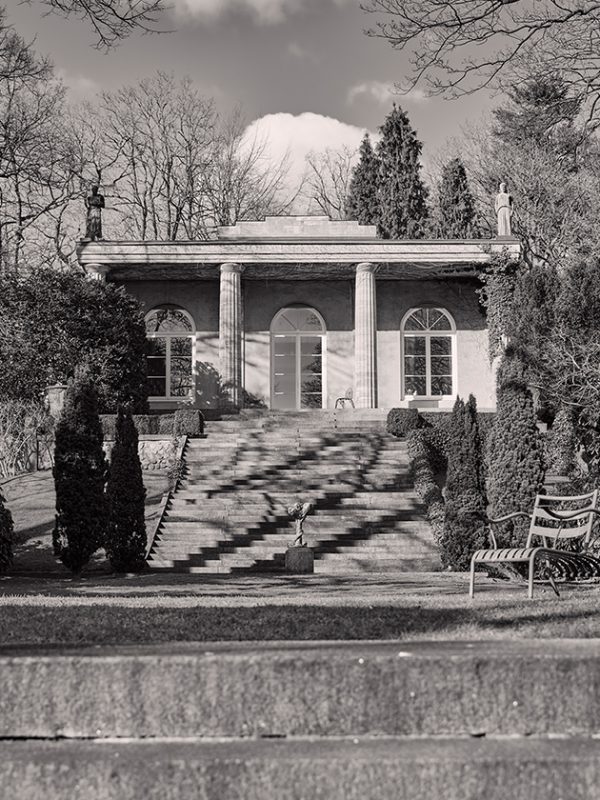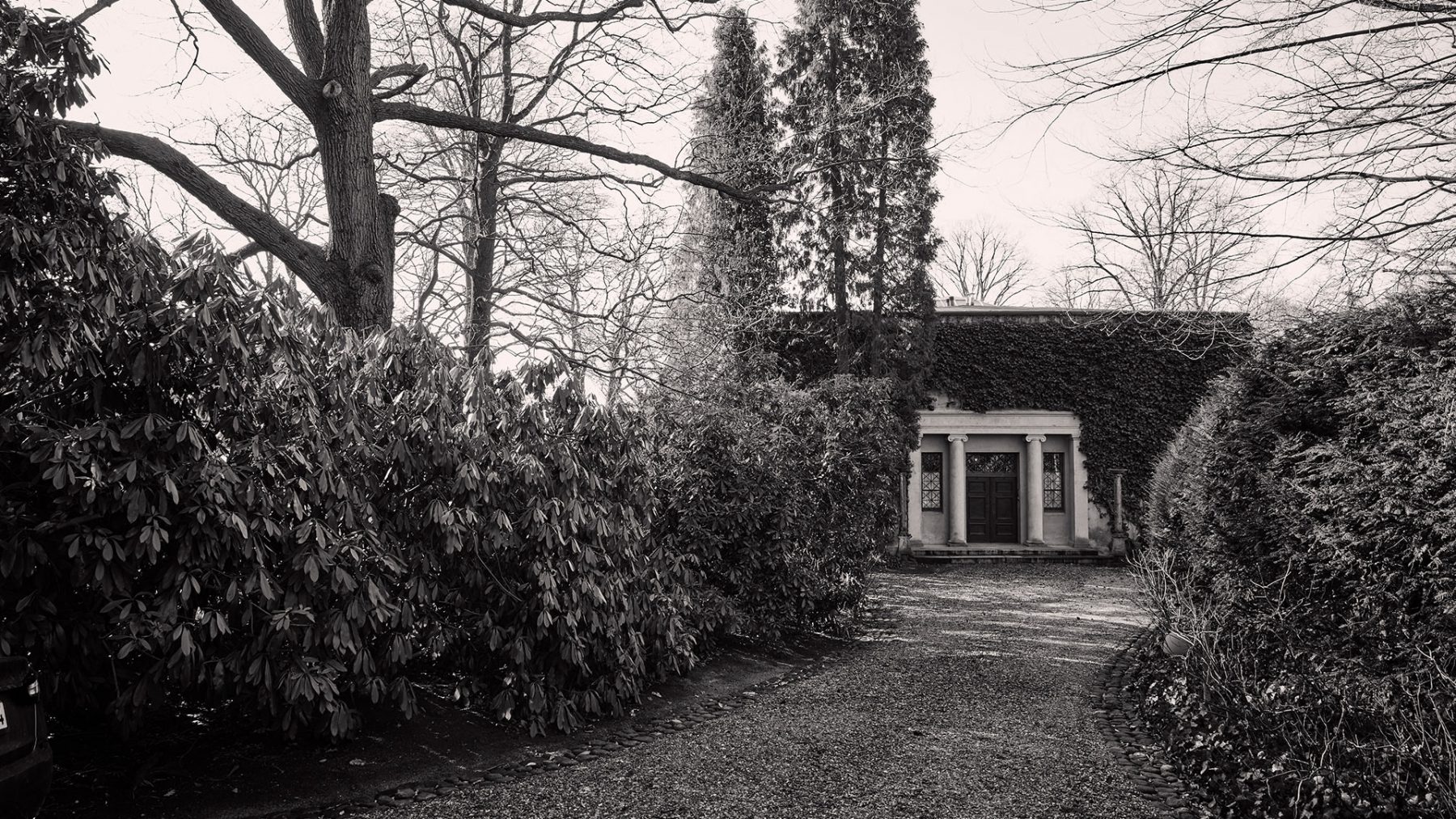Where Style Meets Splendour by Uta Abendroth | 1st June, 2018 | Prime Properties
Tucked away in the hills of desirable Blankenese, Villa Jako is one of the most iconic yet enigmatic buildings in Hamburg. Now famous as the former home of Karl Lagerfeld, the property was built in the 1920s in the style of a Roman villa, with spectacular river views.
“The mist, the wind, the shrouded view through lace curtains of the River Elbe, and the sirens of the ships. That is Hamburg for me,” says Karl Lagerfeld, recollecting his childhood. This feeling was surely echoed for Germany’s most influential fashion designer in “Villa Jako”, set on a hill in the suburb of Blankenese, which he acquired in 1991. By 1998 he had already decided to part ways with his Hamburg residence, asserting: “It’s impossible to live on the Elbe. You spend all your time looking out at the river. You ended up becoming lazy.” The unique property, located on the residential road known as Wilmans Park, on a completely private hillside plot spanning almost 12,000 square metres, quickly found a new custodian. That seems to have always been the case throughout the course of its 90-year history. The prominent Hanseatic shipping underwriter Hermann Witte had the villa designed and built by Walther Baedeker at the beginning of the 1920s. The architect, the son of the famous travel guide publisher, had built various mansions in the local area between 1908 and 1930, and was highly regarded in patrician circles. The original design was relatively small-scale to begin with, in line with the needs of the bachelor Witte, and in 1924 the single-storey villa was completed in a neo-Classical style. Then, in 1927, the lawyer Alfred Schüler acquired the property on the Elbe hillside. He needed more space to accommodate his family, so he commissioned Baedeker once again to add another storey to the house. The so-called “Villa Schüler” remained in the ownership of the Schüler family right up until 1987. The next owner, Lagerfeld, renamed the property “Villa Jako” in honour of his deceased partner Jacques, and commissioned the art conservator Renate Kant, who had already brought a new lease of life to the city’s town hall and Mellin Passage, with the restoration.
A narrow path leads up to the listed villa. It ends, at a slight incline, with a triple-arched portal that gives no clue at all as to the calibre of property that lies behind it. Only once through this impressive entrance gate does the façade of the house come into view, slightly lower down the hill with its two Ionian columns either side of the front door. Entering inside, the special marvel of the property becomes apparent. Reminiscent in style of a Roman villa, everything has a perfect symmetry – with generously dimensioned rooms, a sense of grand opulence, and dream views across the terraced garden to the River Elbe beyond. The vestibule opens onto a central atrium with a water feature sunken into the floor (it is currently covered over and a table stands in its place). The Romans used this socalled impluvium as a basin for catching rainwater. It is purely decorative here though, reflective of the slightly larger pool of the garden fountain. Two rooms open to the left and right of the atrium: the kitchen to the west and a room decorated as a Chinese salon to the east. This is adjoined by a bathroom, which Karl Lagerfeld had refitted by the French interior designer Andrée Putman. The atrium is crowned by a glass dome that allows diffuse daylight down into the space. This room also leads through to the living room, which spans the entire breadth of the house and measures some 80 square metres, with three round-arched doorways that open on to the garden. The coffered ceiling in this room is emblazoned with gold leaf that is as old as the property itself, just like the exquisite herringbone parquet floor. Lagerfeld had the almost six-metre walls painted in the 1990s, creating an overall look that is more eclectic than classic in feel. From the south terrace, where four Doric columns in shell limestone carry the truss and stepped gable, and the casts of antique statues serve as the finishing touches, the line of view sweeps out across the mosaic floor tiles to the river beyond. The park is formed of terraces, with stone steps leading down from the house to rose, Baroque and Biedermeier gardens, as well as to a grove of elderberry trees, and a water fountain. One straight axis runs right through the entire property and grounds, extending out beyond the plot to unobstructable views across the river.
While the dimensions of the main level convey a grand prestige, there is a cosy intimacy to the first floor, even though the space totals some 127 square metres. Three bedrooms, with adjoining bathrooms and a dressing room, are grouped around an open gallery, which forms the space between the skylight and the atrium. Bookshelves here transform what is actually a hallway into a wonderful library space, with velvet drapes adding to the sense of homeliness. The view from the windows of this floor looks out onto the casemate-like passages, so-called haw-haws, that traverse the hillside plot from east to west and originally served to keep game from entering and crossing the grounds. When the property was first built, the lower ground level was only accessible from the outside, but an inner staircase was added in the late 1990s allowing for direct access from the ground level to further rooms that would be suitable for use as children’s bedrooms, guestrooms or hobby rooms, as well as a self-contained apartment with a separate entrance. In addition, there are storage and utility rooms. “Villa Jako” is an impressive building that owes its special appeal to the contrasts that coalesce here. Not only those in the house itself and the grounds but also those in the surrounding area: Blankenese is a diverse mix, where steps and narrow pathways connect small fisherman’s cottages with grand mansions, all dotted across the hillside leading down towards the Elbe. Large and small are mutual complements to one another here, as are expanse and intimacy. Karl Lagerfeld made a lasting testament to this home in his own inimitable way – releasing a new fragrance for men in 1998 and calling it “Jako”. He even had the photoshoot for the ad campaign on the columned terrace of the property, and has published a book in which he documented different views and details of this dwelling. The “New York Times Magazine” honoured the villa with a great compliment, declaring it the most beautiful house that Lagerfeld has ever created.
Contakt:
Hamburg-Elbe (DE) Engel & Völkers Immobilien GmbH – Licence partner of Engel & Völkers Residential GmbH
TEL.: +49 40 866 06 50 E-MAIL: [email protected]
